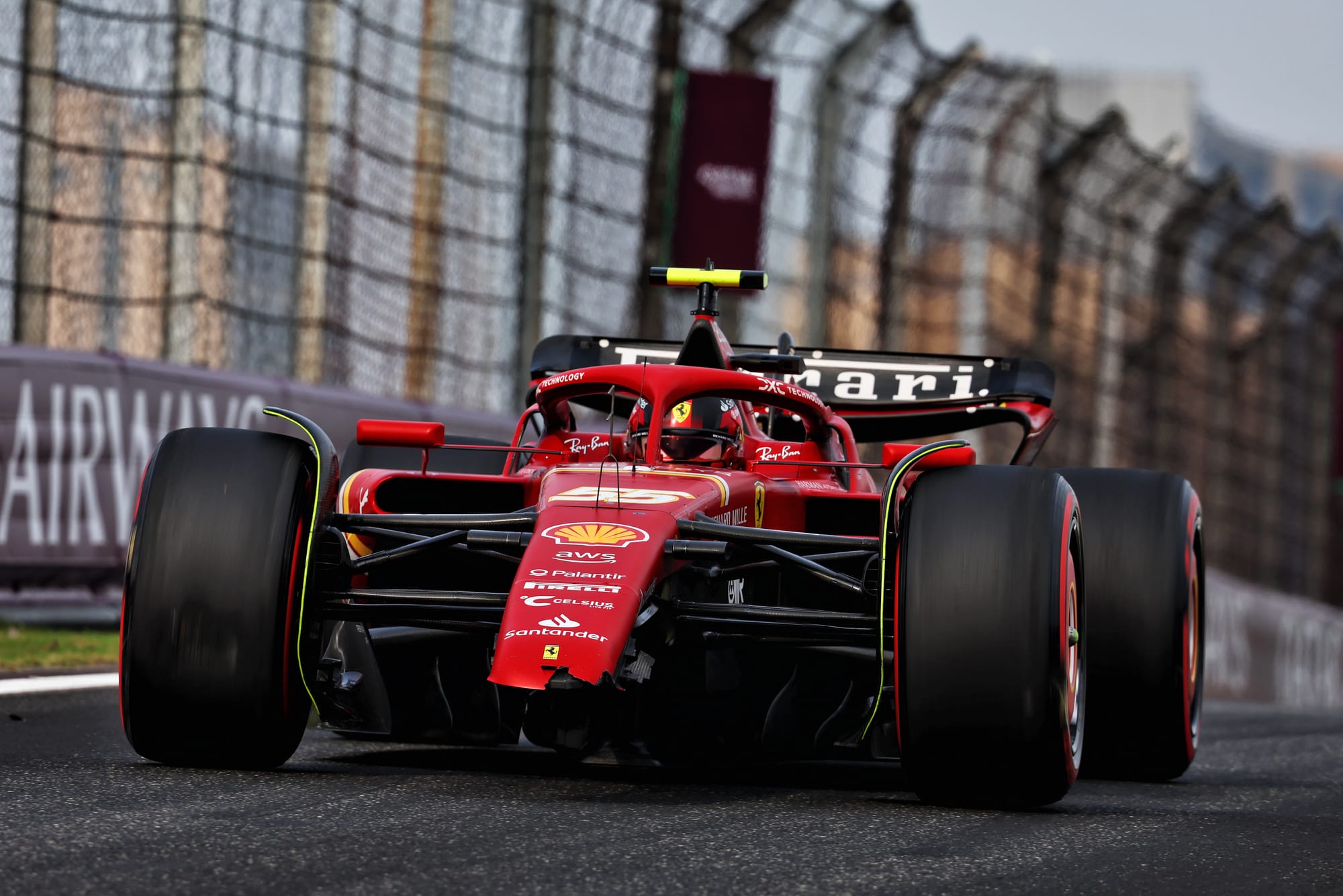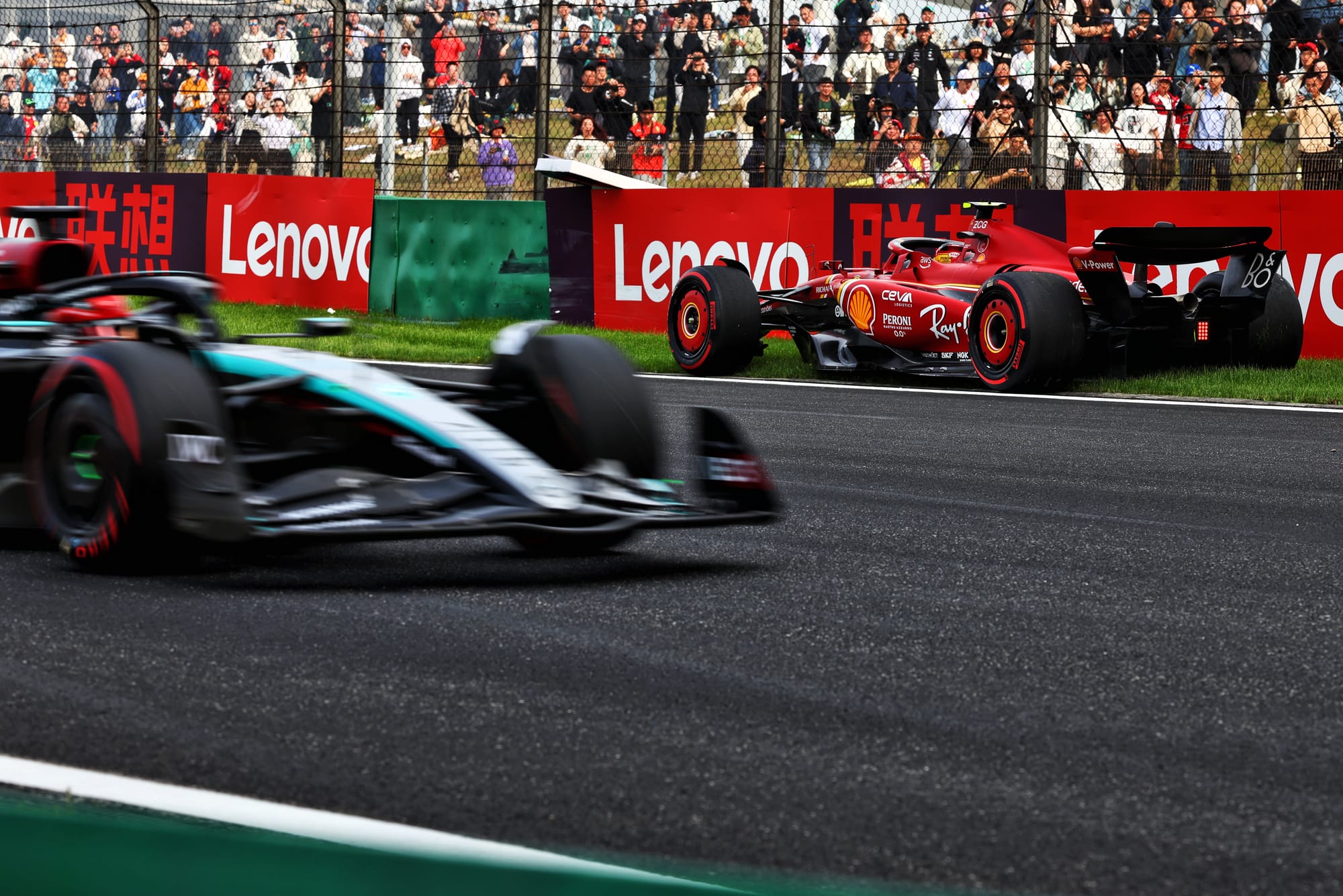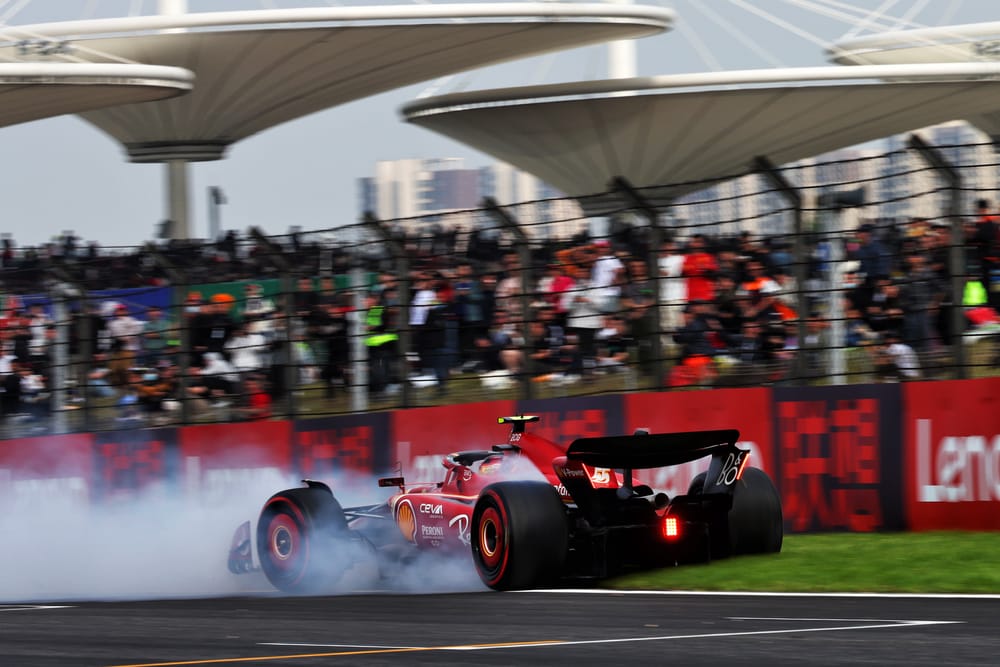Up Next

Aston Martin's protest of the results of qualifying for Formula 1's Chinese Grand Prix has been dismissed by the stewards via a detailed and revealing verdict.
The Silverstone-based team attempted to have the Saturday session at Shanghai reviewed because of race control's decision to allow Ferrari driver Carlos Sainz to continue competing after his crash.
Sainz went off at the final corner during Q2, smacking his SF-24 into the barriers - but it was sufficiently intact to where after a period spent stationary he was able to return to the track without outside assistance.
He completed another lap under red flag conditions to bring the car back into the pits, had it repaired and set a laptime to advance to Q3 - effectively at the expense of Aston Martin driver Lance Stroll.
In making its protest, Aston made the case that what happened with Sainz was a breach of F1's sporting regulations, specifically Article 39.6, which states that any car that "stops on the track during qualifying" should not be permitted to partake further into the session
The hearing regarding Aston's protest featured representatives from the team and Sainz's Ferrari team, as well as officials from race control.
Likewise, "a number of the teams" requested to attend and were permitted, as was FIA single seater director Nikolas Tombazis.
The rule itself wasn't the sticking point

Having deliberated on the matter, the stewards' panel - featuring ex-F1 driver Vitantonio Liuzzi - came out with a detailed decision over three hours after the start of the hearing.
The stewards established that "it was clear from the examples cited by a number of the team managers present and the FIA that", while the precise wording of the rule says any car that "stops" should be barred from continuing, "this was not how the rule was applied in the past".
FIA representatives argued that it would "ordinarily be permitted" that for a car to continue if it restarted in "reasonable time", as long as there was no outside assistance.
The stewards said Aston accepted this, acknowledging prior precedent.
Instead, they said, Aston's case centred around the duration of the stoppage - and a specific message from race control.
The duration of the stoppage
The stewards established that 11 seconds had elapsed between Sainz came to a halt and the red flag was thrown out.
Sainz's restart under his own steam, meanwhile, happened a further 66 seconds later - so 77 seconds in total after he initially came to a halt after the crash.
As the stewards put it, "the issue then became one of duration: was one minute 17 seconds too long?".
This was Aston's argument - but the stewards said that "absence clear guidance" in regulations or an established practice on the matter, this was a decision to be left to the discretion of race control.
"The teams themselves said that they had previously attempted to agree what they considered to be a reasonable length of time before a car would be considered 'stopped'," the stewards revealed.
"Unfortunately, they were not able to come to a final agreement on the maximum time allowed."
The race control message
The other centrepiece of Aston's case was a message from race control - "car 55 (SAI) stopped on start/finish straight".
That race control message uses the exact same verb, albeit in a different tense, to the rulebook - but the stewards referred to an example from the 2022 Canadian Grand Prix when Alexander Albon's Williams, was stopped for around 40 seconds, with a similar message from race control, but was allowed to restart "without complaint from any teams".
"Race control clarified that the language was standard language used in the system and therefore did not convey what Aston was suggesting," the stewards added - and they clearly accepted this logic.
The rule tweak that didn't happen
The stewards also revealed that in a July 2023 F1 Commission meeting the wording of Article 39.6 was specifically discussed, with an apparent conclusion there being that the provision about "outside assistance" - which effectively governs the de facto application of this rule - would be added to the regulations.
"We were informed that the above change to Article 39.6 was not in fact made," the stewards added.
"So we did not rely on these minutes [notes from the meeting], beyond noting that there appeared to be an agreement at least among those attending that meeting on that day, that was consistent with the approach race control was adopting".
Further down, the stewards described the wording of the article as "plain" and "warranting a more stark conclusion" - suggesting what is indeed an evident mismatch between the rule and race control's past practice, even if in this particular case past practice was the overriding factor in the stewards' decision.
The outcome

Sainz and Ferrari will therefore keep their seventh place on the grid for Sunday.
And, as the protest has been dismissed, the protest fee of 2,000 Euros paid by Aston will not be returned to the team.




